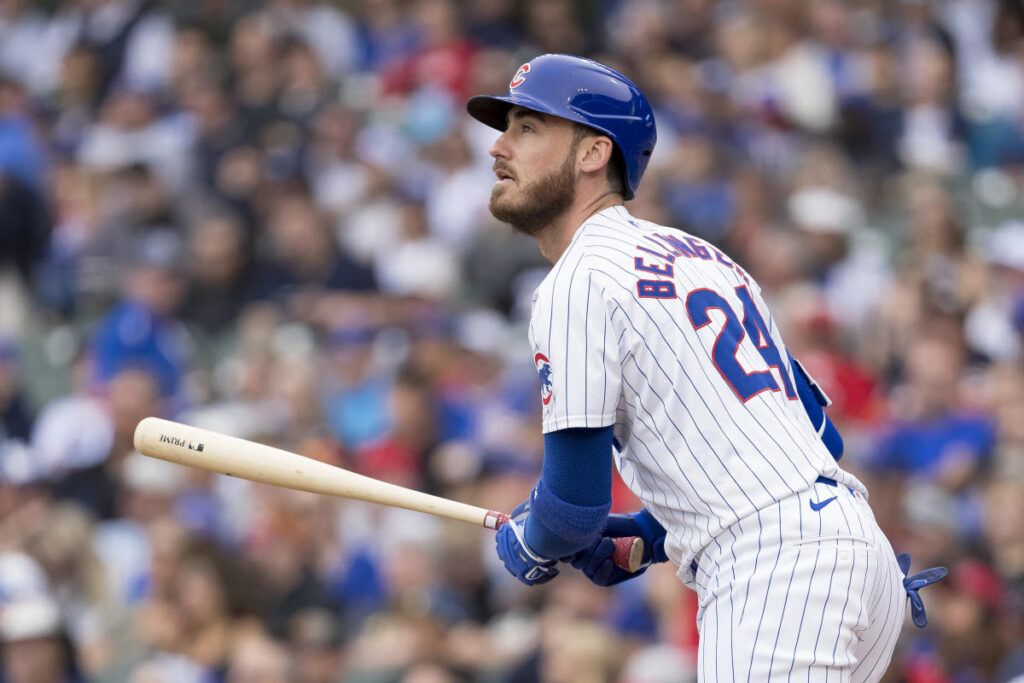The New York Yankees have found their replacement for Juan Soto in a significant trade with the Chicago Cubs, securing former National League MVP Cody Bellinger in a pivotal move. Announced on Tuesday, the trade not only brings Bellinger to New York but also includes a financial compensation of $5 million from the Cubs, designed to help offset Bellinger’s hefty salary, which is $27.5 million in 2025. In exchange, the Yankees are sending right-handed reliever Cody Poteet to Chicago. The Yankees confirmed that Bellinger will take over center field responsibilities, allowing Aaron Judge to shift to right field after covering center for the entirety of 2024. Bellinger’s connection to the Yankees runs deep, with his father, Clay Bellinger, having played in the Yankees organization, reflecting a family lineage that adds an emotional layer to his joining the team.
Bellinger’s journey in Major League Baseball has been marked by notable highs and lows, particularly following his standout MVP season in 2019. During that year, he captivated fans with an impressive performance, accumulating 8.6 wins above replacement according to Baseball Reference. However, the aftermath of a dislocated shoulder suffered during the 2020 NLCS celebration altered his trajectory, leading to a decline in performance over the next few seasons. Bellinger’s struggles saw him become a liability at the plate in 2021, which culminated in the Dodgers non-tendering him, thus making him a free agent earlier than expected. The Cubs saw an opportunity to invest in Bellinger’s potential recovery by signing him to a relatively low-risk contract, which ultimately paid off when he rebounded to win the NL Comeback Player of the Year title in 2023. Despite this resurgence, Bellinger’s 2024 season didn’t match expectations, leading to a trade during his tenure with the Cubs.
Throughout the past few years, contrasting fortunes have defined Bellinger’s career in the wake of his initial triumphs. After his contract with the Cubs, he aimed to secure a brighter future through free agency yet faced sluggish interest. Eventually, he inked a three-year, $80 million deal with the Cubs, featuring opt-outs after both the first and second years. Yet, his disappointing 2024 performance led to questions about his long-term viability and the sustainability of his shoulder health. Now at 29 years old, there remains a hope that he can recapture his MVP form with the Yankees, who have a reputable history of nurturing athletes back to peak performance.
For the Yankees, acquiring Bellinger marks a strategic move in mitigating the significant impact left by Soto’s departure to the New York Mets on a record-setting contract. Initially targeting Bellinger during his previous stint in free agency, the Yankees pivoted to add offensive talent through trades. However, losing Soto, along with other key players like Alex Verdugo and Gleyber Torres heading into free agency, necessitated Bellinger’s addition to start rebuilding their roster’s offensive capability. With this step, the Yankees are signaling a commitment to regain competitiveness, especially in a season where they are grappling with other potential player losses.
Conversely, the decision-making process for the Cubs is intriguing, as they sought to alleviate the burden of Bellinger’s salary while realigning their roster strategy. Trading Bellinger allowed the Cubs to bring in Poteet, a solid depth relief option, but the primary aim was reducing payroll commitments associated with Bellinger’s contract. Their trade for Kyle Tucker indicated a shift towards a more robust lineup, indicating an ambitious desire to re-establish themselves as a playoff contender. However, the effectiveness of the trade heavily depends on the Cubs’ capacity to leverage their new financial flexibility to recruit impactful players and strengthen their roster further.
In summary, the Yankees’ acquisition of Cody Bellinger is a calculated risk as they work to fill the offensive gap left by Juan Soto’s contract departure. Bellinger’s career, colored by cycles of brilliance and injury-driven challenges, represents both a gamble and an opportunity for resurgence. As Bellinger takes on his new role in New York’s ambitious roster, the Cubs must also navigate their trajectory carefully, focusing on how to utilize the cap space freed by Bellinger’s departure to concoct a competitive team capable of thriving in a challenging league. The potential effects of these transactions could resonate through both organizations as they strive for success in the coming seasons.

